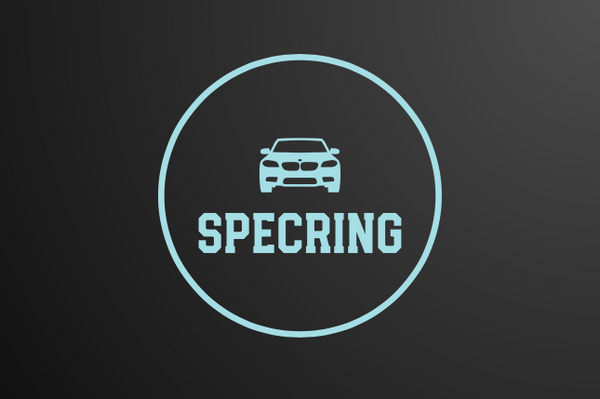When it comes to modifying a BMW, enthusiasts often debate between the F30 3 Series sedan and the F32 4 Series coupe. Both models share the same underpinnings, but they differ in body style, driving dynamics, and customization potential. If you're looking to personalize your ride with carbon fiber upgrades, aero kits, or performance mods, which model offers the better platform?
In this detailed comparison, we’ll break down body styling, performance tuning, aftermarket support, and aesthetic customization to determine the ultimate BMW canvas for enthusiasts.
F30 vs. F32: Key Differences
The F30 (2012-2018) is BMW’s sixth-generation 3 Series sedan, designed for practicality and sportiness. On the other hand, the F32 (2014-2020) is the two-door coupe version, prioritizing sleek styling and a more aggressive stance.
| Feature | BMW F30 (3 Series Sedan) | BMW F32 (4 Series Coupe) |
|---|---|---|
| Body Style | 4-door sedan (family-friendly) | 2-door coupe (sportier) |
| Wheelbase | 110.6 inches | 110.6 inches |
| Weight | ~3,450 lbs | ~3,560 lbs |
| Aerodynamics | Standard sedan profile | Lower roofline, better aero |
| Aftermarket Mods | Wide availability, more practical mods | Focus on performance and styling |
| Suspension | Softer ride for daily use | Sportier factory setup |
While both cars share BMW's N20, B48, and N55/B58 engine options, the F32 is engineered for a more aggressive look and driving feel.
1. Aesthetic Customization: Carbon Fiber & Body Kits
Both the F30 and F32 have extensive carbon fiber modification options, but there are key differences in availability and impact:
F30 3 Series Mods:
- Carbon fiber front lip spoilers enhance aerodynamics.
- M Sport bumpers and rear diffusers give it a sportier look.
- Roof spoilers and mirror caps improve styling.
- Side skirt extensions add visual aggression.
F32 4 Series Mods:
- Wider range of aggressive front bumpers (M4-style conversions).
- Vented hoods and widebody kits provide a track-ready aesthetic.
- Lower ride height and sleeker profile enhance aerodynamics.
- Larger rear spoilers (GT wings) are more common on F32 builds.
🏆 Winner: F32 – The coupe’s sportier profile and more aggressive aftermarket bumper kits make it the better choice for visual upgrades.
2. Performance Upgrades & Engine Tuning
If you're considering performance mods such as tune upgrades, exhaust systems, and intakes, both cars offer excellent aftermarket support.
F30 Performance Mods:
- MHD, BM3, or JB4 tuning unlocks hidden horsepower.
- Downpipes and cat-back exhausts improve flow and sound.
- Upgraded intercoolers help with cooling and performance.
- X-Drive models add AWD traction but limit stance modifications.
F32 Performance Mods:
- Same tuning potential as the F30 but with a sportier chassis.
- Lower factory ride height makes it better for coilover setups.
- Carbon fiber intake systems and charge pipes improve airflow.
- More aggressive camber options for better cornering grip.
🏆 Winner: Tie – Both the F30 and F32 can achieve similar power gains, but the F32 benefits from a sportier chassis that makes performance upgrades more engaging.
3. Wheels & Suspension Customization
The right wheels and suspension setup can transform your BMW’s handling and stance.
F30 Wheel & Suspension Mods:
- 18" to 20" wheels fit well with minor fender rolling.
- Lowering springs (Eibach, H&R) provide a balanced drop.
- Coil overs (KW V3, Bilstein PSS10) improve adjustability.
- Camber kits are necessary for aggressive fitment.
F32 Wheel & Suspension Mods:
- More aggressive offsets fit due to wider fenders.
- Bigger 19"-20" wheel fitment with less rubbing issues.
- Better factory damping control compared to F30.
- Air suspension is more common on F32 builds.
🏆 Winner: F32 – The wider fenders and lower ride height make it a better choice for aggressive stance builds.
4. Interior Customization
Both models share nearly identical interiors, but modding potential differs.
F30 Interior Mods:
- Alcantara steering wheels with M Performance trim.
- Digital clusters (MHD, ID4/ID6 retrofits).
- Ambient lighting upgrades for luxury feel.
F32 Interior Mods:
- Carbon fiber trim kits are more common.
- Sportier seats & harness setups fit better.
- Alcantara headliners and M4-style retrofits.
🏆 Winner: F32 – More sport-oriented customization options.
5. Daily Drivability & Practicality
If your BMW is also a daily driver, here’s how they compare:
F30 3 Series:
- More spacious back seats & trunk.
- Easier rear passenger access.
- Better fuel economy on longer trips.
F32 4 Series:
- Less practical rear seats.
- Smaller cargo space.
- More road noise due to sportier setup.
🏆 Winner: F30 – The extra space and practicality make it a better daily driver.
Which Model Should You Choose?
Both the BMW F30 and F32 offer incredible modding potential, but which one is better depends on your goals.
Choose the F30 if:
- You want a practical daily driver with customization potential.
- You need four doors and rear seat access.
- You prefer subtle yet effective modifications.
Choose the F32 if:
- You want a sportier, coupe-styled BMW.
- You plan to install aggressive carbon fiber aero kits.
- You love stance builds, track setups, and aesthetic tuning.
🏁 Overall Winner: BMW F32
For pure customization, the F32 is the better platform. It has better aesthetics, more aggressive aftermarket parts, and a sportier driving feel. However, the F30 is the superior choice for a well-rounded daily driver with strong modding options.
Shop BMW Carbon Fiber Mods for Your F30 or F32!
Ready to customize your F30 or F32? Explore our range of carbon fiber spoilers, front lips, diffusers, and mirror caps to take your build to the next level.
Which model do you think is better for customization?

